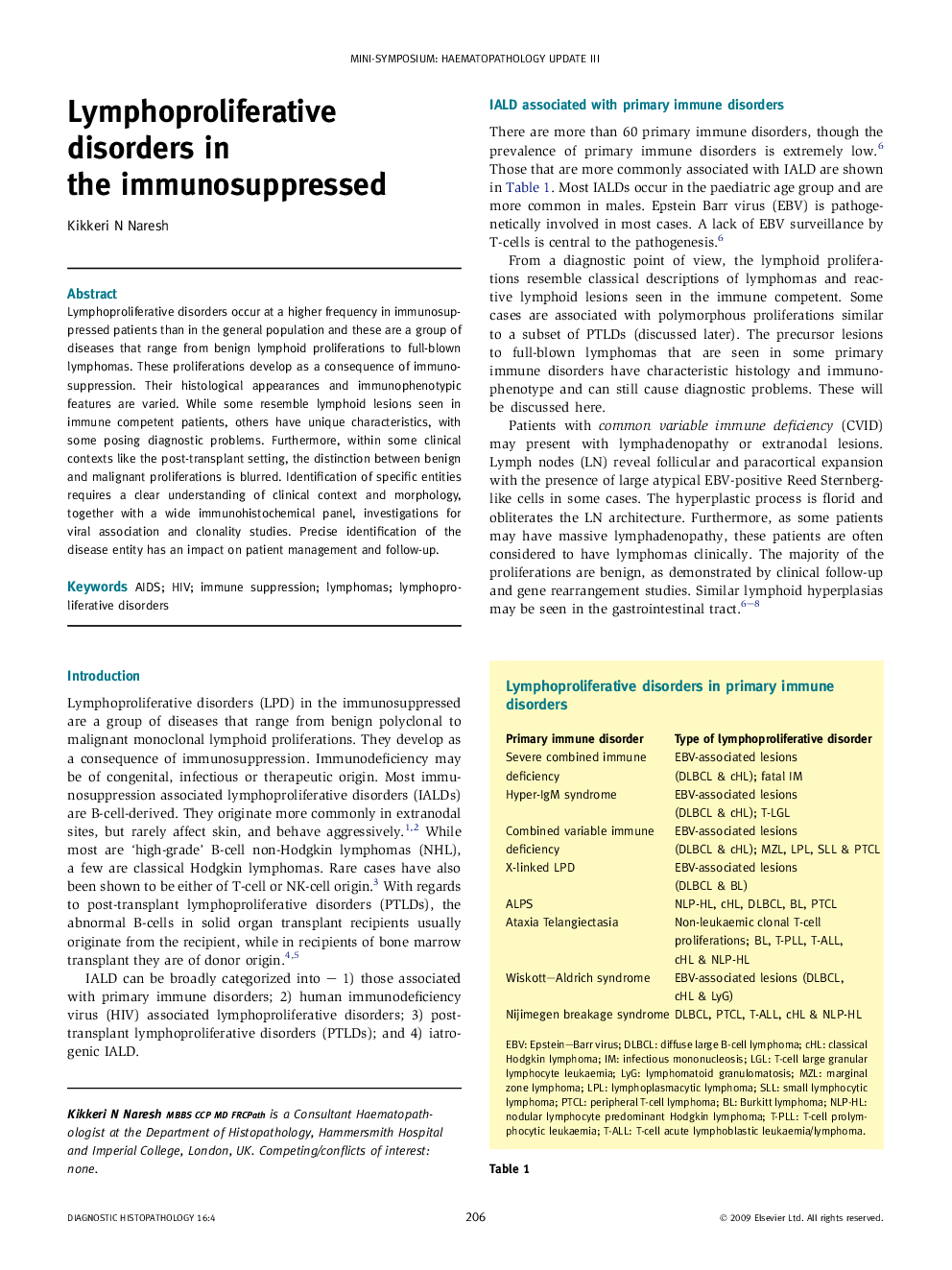| Article ID | Journal | Published Year | Pages | File Type |
|---|---|---|---|---|
| 4131650 | Diagnostic Histopathology | 2010 | 10 Pages |
Lymphoproliferative disorders occur at a higher frequency in immunosuppressed patients than in the general population and these are a group of diseases that range from benign lymphoid proliferations to full-blown lymphomas. These proliferations develop as a consequence of immunosuppression. Their histological appearances and immunophenotypic features are varied. While some resemble lymphoid lesions seen in immune competent patients, others have unique characteristics, with some posing diagnostic problems. Furthermore, within some clinical contexts like the post-transplant setting, the distinction between benign and malignant proliferations is blurred. Identification of specific entities requires a clear understanding of clinical context and morphology, together with a wide immunohistochemical panel, investigations for viral association and clonality studies. Precise identification of the disease entity has an impact on patient management and follow-up.
